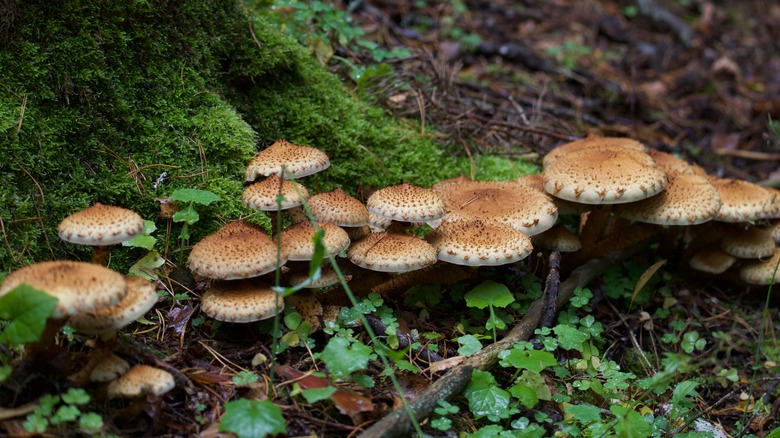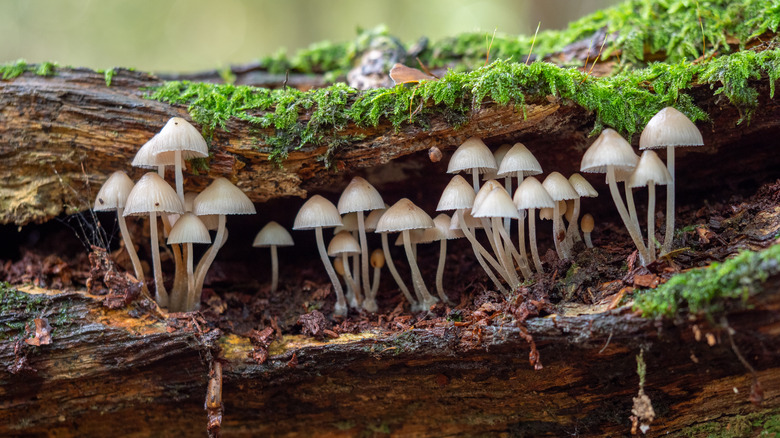Mushrooms Can Form Words And Sentences In A Bizarre Way
Some mycologists (people who study fungi) believe we are just scratching the surface of the many purposes for which mushrooms can be used. Studies from Paul Stamets, an entrepreneurial mycologist based in the Pacific Northwest, have shown mycelium fungus can be used to restore polluted soil, ward off insects in farming, and treat smallpox (via TEDTalk). Some mushrooms make their own wind to ensure their spores are sent far and wide for reproduction. The fungal kingdom is truly one of wonders.
Plants talk to each other using an internet of fungus to communicate underground about nearby water sources and nutrients, as well as to warn neighbors of nearby predators. It seems only natural that mushrooms may be able to communicate with each other too. And just last month, a group of researchers undertook a project that would determine not only whether mushrooms could "talk" to one another, but the nature of the language they may use.
Murmuring mycelium
Mushrooms are connected through a complex underground network of neuron-like structures called mycelium through the mycorrhizal network (via National Forests). This network is what also connects plants underground to help them communicate with one another to ward off noxious pests and ensure nutrients are evenly distributed. Mycelium, the thread-like structures within the network, are even being used to develop meat alternatives, per Comstock's Magazine.
According to The Guardian, fungi have been shown to communicate through this underground mycelium network. For example, when a piece of wood is introduced to a wood-eating mushroom, it fires off electrical signals in this web to other nearby fungi, much like the nerves in a human hand would fire off signals to the brain if it came across a juicy apple, or a hot pot. With this knowledge, one researcher from the University of the West of England named Andrew Adamatzky was curious to determine if these murmuring mycelium were communicating in recognizable patterns, like that of human speech or a wolf pack (per All That's Interesting).
The mushroom vocabulary
To test this, Adamatzky put microelectrodes into four species of mushrooms — the enoki, split gill, ghost, and caterpillar fungi — to determine the patterns of electrical signals they were sending back and forth, according to The Guardian. What he found was that the fungi electrical pulses came in groups and were triggered by external stimuli. In fact, mushrooms could send a variety of up to 50 "words" in their vocabulary and that the "distributions of fungal word lengths match that of human languages," according to their research in Royal Society Open Science. For example, each mushroom word had an average length of 5.97 letters, versus the English language with an average of 4.8 letters (via All That's Interesting). The split gill mushrooms, which eat away at decaying wood, were the most eloquent "speakers," with the most complex sentences of electrical pulses of any fungi tested, per The Guardian.
Adamatzky told The Guardian this could be a means of communicating location, like a howl of a wolf pack, or the appearance of new food, like plants communicating to share nutrients. Of course, we're a long way from speaking mushroom and interpreting just what these signals mean, but one thing was proven in this research: The signals were not random. Just like plants have recently been thought to be more sentient than once thought, perhaps mushrooms are too.


